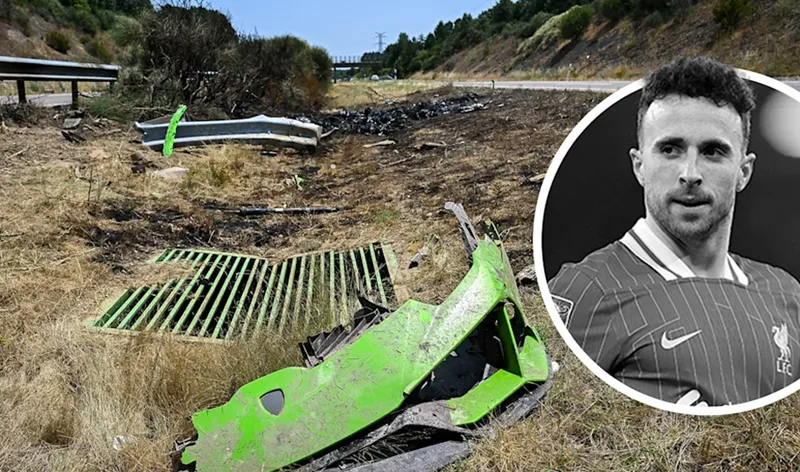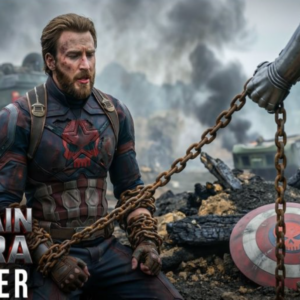
The football community remains in mourning following the tragic deaths of Liverpool star Diogo Jota and his younger brother André Silva in a car crash on July 3, 2025, in Zamora, Spain. The brothers, aged 28 and 25, perished when their Lamborghini Huracán veered off the A-52 motorway, crashed, and burst into flames. For weeks, speculation has swirled about the cause of the accident, with initial reports pointing to a possible tire blowout and questions about whether excessive speed played a role. The final report from Spain’s Guardia Civil, released on July 25, 2025, provides definitive answers, shedding light on the factors that led to this devastating loss. This article delves into the report’s findings, the circumstances of the crash, and the ongoing impact on the football world.
The Crash and Initial Theories
The accident occurred around 12:30 a.m. local time as Diogo Jota and André Silva were traveling from Porto, Portugal, to Santander, Spain, to catch a ferry to England. Jota, advised against flying due to recent lung surgery, was returning to Liverpool for pre-season training. The brothers were driving a £180,000 acid green Lamborghini Huracán when the vehicle veered off the A-52 near Cernadilla, struck the central reservation, and caught fire. Both were pronounced dead at the scene, leaving behind Jota’s wife, Rute Cardoso, their three young children, and their grieving parents, Isabel and Joaquim Silva.

Early statements from the Guardia Civil suggested a tire blowout during an overtaking maneuver as the primary cause, with skid marks indicating the car was traveling significantly above the 120 km/h (74 mph) speed limit. However, conflicting accounts emerged. Two Portuguese lorry drivers, José Aleixo Duarte and José Azevedo, who witnessed the crash, disputed claims of speeding, asserting the Lamborghini was moving at a moderate pace and that the A-52’s poor road conditions contributed. These discrepancies fueled debate about whether speed, a tire failure, or external factors like road maintenance were to blame.
The Final Report: Key Findings
The Guardia Civil’s final report, submitted to the court in Puebla de Sanabria, confirms that Diogo Jota was driving the Lamborghini at the time of the crash. Forensic analysis of tire marks, debris, and the vehicle’s wreckage revealed that a rear tire blowout occurred while the car was overtaking a truck, causing it to lose control. Critically, the report estimates the car’s speed at approximately 180–200 km/h (112–124 mph), well above the legal limit, based on skid marks extending 100 meters and the extent of the wreckage. This excessive speed, the report concludes, exacerbated the consequences of the tire failure, making it impossible for Jota to regain control.

The investigation also examined the tire’s condition. While no manufacturing defects were found, the report notes that the tire’s pressure may have been suboptimal, potentially due to wear or improper maintenance, though this was not the sole factor. The A-52’s road surface, described by witnesses as poorly maintained, was analyzed but deemed “driveable” despite minor faults. The report dismisses claims that the road was a significant accident “black spot,” noting that a near-fatal crash involving a 60-year-old woman days earlier on the same stretch was unrelated.
Intriguingly, the report addresses speculation about the Lamborghini’s pyrotechnic door-release system, designed to eject doors during a rollover. While this feature was investigated, no evidence suggests it malfunctioned or contributed to the fire that engulfed the car. Instead, the fire likely resulted from the impact and a ruptured fuel line, intensified by the crash’s severity.
Conflicting Witness Accounts
The lorry drivers’ testimonies, widely reported in Portuguese and Spanish media, complicated the narrative. José Aleixo Duarte claimed the Lamborghini passed him at a “moderate speed” five minutes before the crash, while José Azevedo, who filmed the burning wreckage, insisted the road’s darkness and poor condition were significant factors. The Guardia Civil’s report acknowledges these accounts but prioritizes forensic evidence, noting that witness perceptions of speed can be unreliable, especially at night. The drivers’ claims that the A-52 is “dangerous” were considered, but the report found no structural road issues sufficient to cause the crash independently.
The Emotional Aftermath
The report’s release has reopened wounds for the Silva family. Rute Cardoso, married to Jota just 11 days before the crash, has remained private, supported by family and Liverpool staff. Isabel Silva, the brothers’ mother, was reportedly inconsolable upon learning the details, particularly the confirmation that Diogo was driving at high speed. The findings have also sparked debate among fans, with some defending Jota’s character and others questioning his decision to drive at such a pace. Tributes continue to pour in, with Liverpool considering retiring Jota’s number 20 shirt, a first for the club.

The funeral on July 5 in Gondomar drew thousands, including Liverpool players Virgil van Dijk, Andy Robertson, and Cody Gakpo, who carried floral tributes shaped like the brothers’ jersey numbers—20 for Diogo and 30 for André. Cristiano Ronaldo, Rúben Neves, and Bernardo Silva also attended, reflecting the brothers’ impact. The Bishop of Porto’s homily emphasized “solidarity in love,” a sentiment echoed by fans at Anfield, where a shrine of scarves and flowers remains.
Broader Implications
The report raises questions about high-performance vehicles and road safety. The Lamborghini Huracán, capable of exceeding 200 mph, is designed for speed, but the investigation highlights the risks of such power on public roads, especially during high-speed overtaking. Javier Lopez Delgado, a road safety expert, noted that while speed was a factor, multiple elements, including tire maintenance and road conditions, contributed. He argued that at a lower speed, such as 55 mph, the outcome might have been different.
For Liverpool and Portuguese football, the loss is profound. Jota’s 65 goals in 182 appearances and his role in the 2024–25 Premier League title cemented his legacy. André, a midfielder for Penafiel, was a rising talent. The Portuguese Football Federation vowed to honor their legacies, while Liverpool’s Arne Slot called Jota “a friend to everyone.”
Moving Forward
The final report closes a chapter on the technical causes of the crash but does little to ease the pain of those left behind. As the football world reflects, the focus remains on supporting Rute, their children, and the Silva family. The tragedy serves as a stark reminder of life’s fragility, echoing the words of a Gondomar fan at the funeral: “Say everything you want to say—tomorrow could be too late.”



